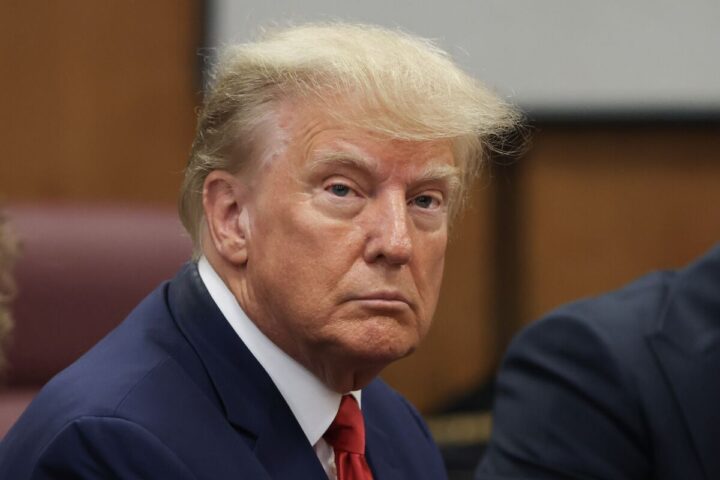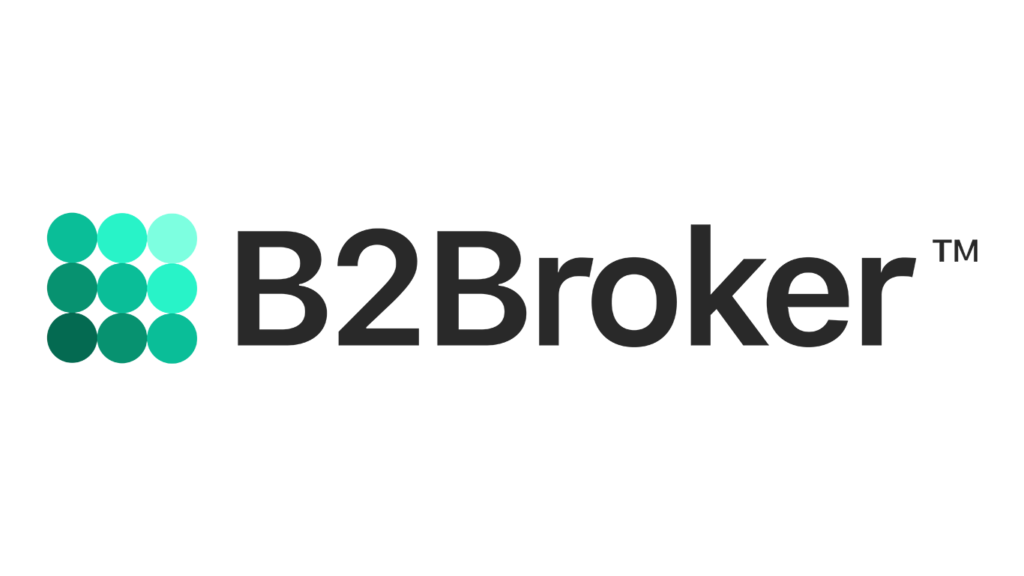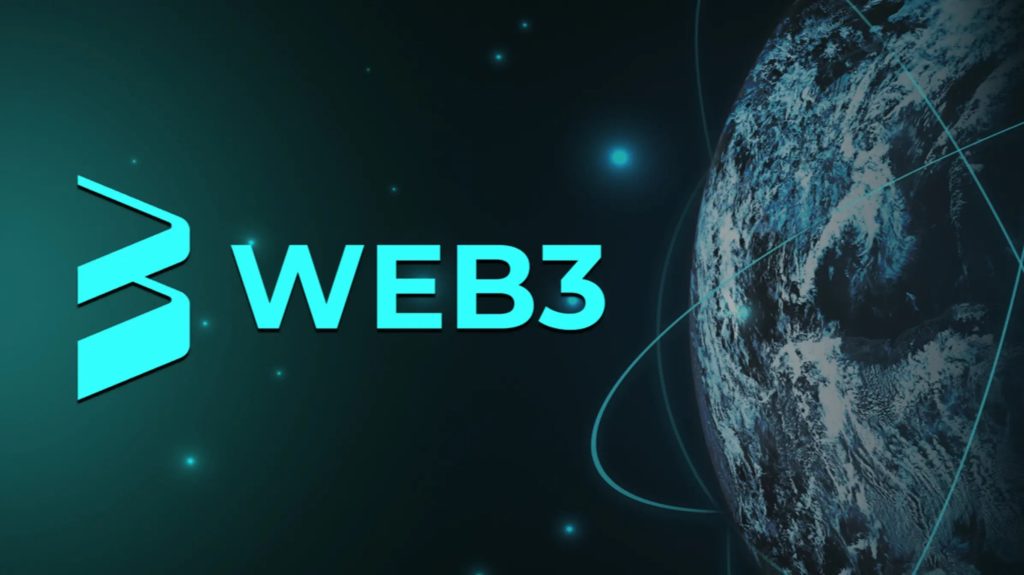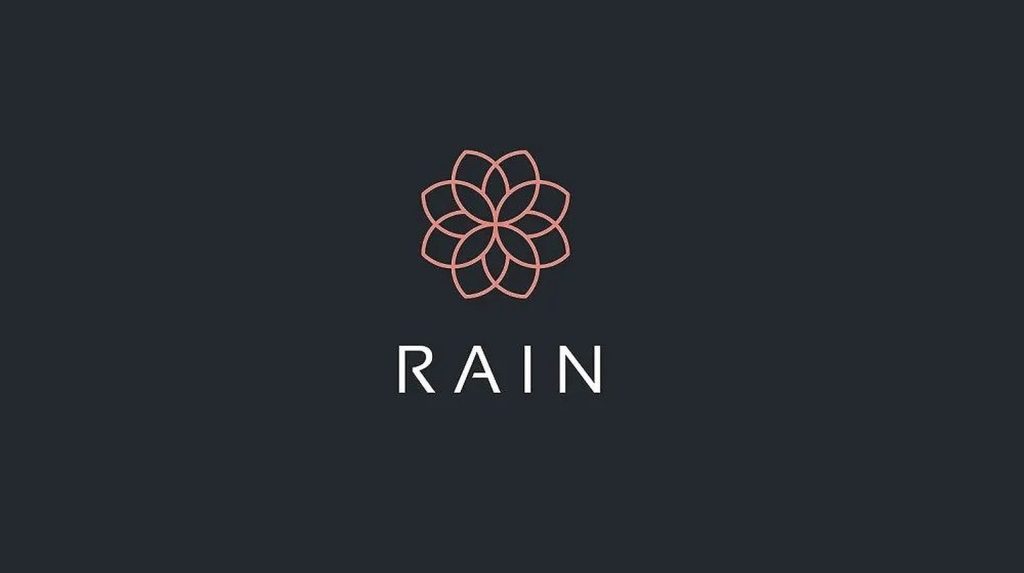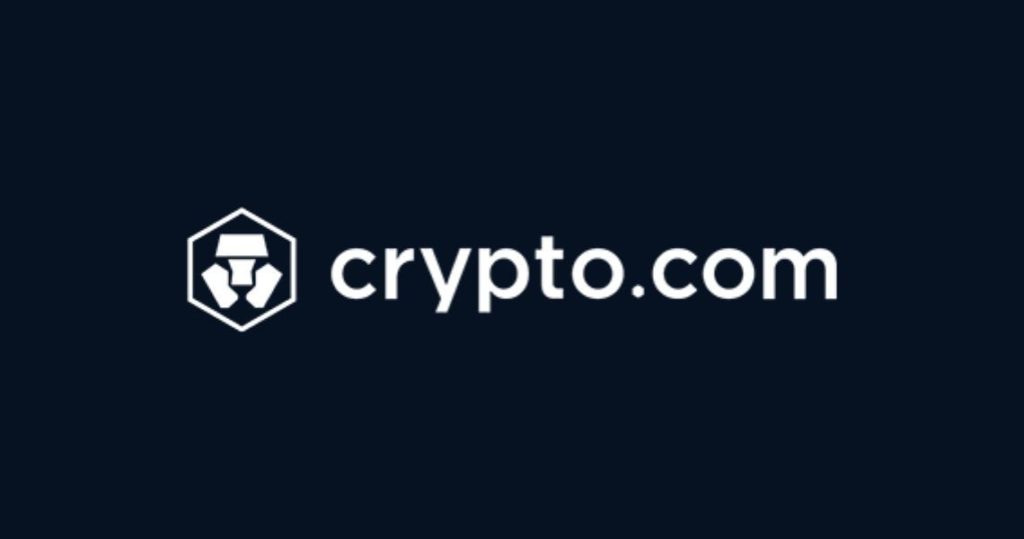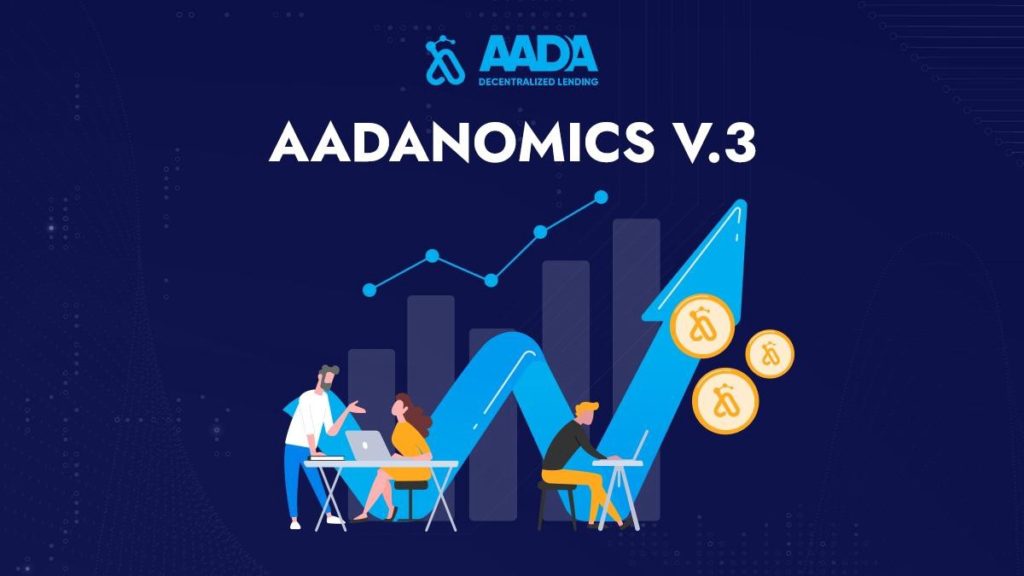B2Broker, a leading provider of liquidity and technology solutions for the forex and cryptocurrency industries, has successfully unveiled its brand-new White Label cTrader platform. The new solution was designed with the goal of providing brokers with direct connections to one of the most popular multi-asset trading platforms on the market there is.
Many market participants have already verified that the cTrader platform is modernized software with revolutionary capabilities and complex trading instruments. All of that contributes to the platform’s popularity among professional traders.
Moreover, brokerage firms will now have the unique opportunity to provide their customers with robust trading conditions on the cTrader platform by implementing the White Label solution delivered by B2Broker.
About White Label cTrader
Utilizing B2Broker’s White Label cTrader solution, everyone looking for a modern solution will have the ability to start their own forex, cryptocurrency or any form of brokerage. The platform’s powerful front end may be customized in any way firms want it to. Such factors make it simple for both institutional and retail enterprises to provide unique and tailored solutions to their clients.
The CEO of B2Broker, Arthur Azizov, said the following:
“CTrader is a well-known platform with a proven track record of success, and it is used by all the market’s top brokers. A quick search on the App Store for cTrader will reveal all the major companies that use this platform.
We believe that in today’s ultra-competitive markets, every broker must offer a wide variety of trading platforms to its clients. Otherwise, the broker would lose clients who wish to trade on the cTrader platform. In addition to the traditional trading capabilities provided by the MT platform, cTrader will almost certainly attract a new category of traders and investors.
When it comes to managing your crypto brokerage, and its algo capabilities, cTrader is one of the top solutions on the market.
Since 2021, we have been seeing a growing demand for cTrader among cryptocurrency brokers. Since many cTrader brokers use our liquidity offering, we’ve decided to open a whole new world for brokers that want to grow more sophisticated and cater to traders’ needs rather than requiring them to use a single platform.”
The White Label cTrader platform is trustworthy and simple to use and provides brokerages with all of the functionalities they need to prosper. There is no need to purchase a cTrader server license, arrange a backup system, create a worldwide network of connected servers or employ an additional workforce to configure and manage the server structure regularly. We automatically do it for you.
Features
- The extensive ecosystem, which includes tools for liquidity, trading platforms, trader rooms, payment solutions and IB programs, is one of the main features of the White Label cTrader. The combination of cTrader’s sophisticated trading tools and B2Broker’s accumulated liquidity pool and continuous client assistance makes an attractive solution for brokerage firms. Our solutions let you get immediate access to complete environment integration.
- Your brokerage team will be given a thorough introduction to the WL cTrader and cBroker user interfaces and capabilities. An explanation of the cTrader platform and an overview of the features and capabilities available to traders will be included in the training session.
- Moreover, you will be given access to top-level liquidity thanks to the connection to banks and other key financial institutions. This guarantees you will have the choice to offer your clients narrow spreads with low delay and lightning-fast execution.
- B2Broker offers dependable, non-stop multilingual services. Therefore, you’ll never walk alone thanks to B2Broker’s 24/7 professional customer support. Should you have any questions, your issue will be resolved shortly.
- Algo trading in C# with customizable indicators and bots is yet another highly appreciated feature. Utilizing B2Broker’s White Label cTrader, you can now provide your clients with an easy-to-use and configurable algorithmic trading solution.
- You will obtain the necessary licenses and permissions to maintain your business properly. Legal requirements are handled during the setup, allowing you to focus on what matters most: expanding your business.
- You will also have exposure to a demo setup, third-party integrations, STP, fair pricing, a modern UI and other features. Furthermore, by having proxy servers carefully positioned worldwide, you can be confident of a consistent connection with little to no lag time.
- The cTrader platform is a complete trading solution that includes everything a broker requires to be successful. With B2Broker’s White Label cTrader, you can provide your clients with a top-class trading experience consisting of all the tools and capabilities they require to trade successfully.
Final thoughts
B2Broker’s White Label cTrader is the ideal solution for brokers wishing to provide their customers with a world-class trading environment. Your customers will have the ability to trade confidently and effectively. With B2Broker’s 24/7 client service, you can be assured that any issues will be resolved as soon as possible. So, if you’re seeking a dependable and complete trading solution for your brokerage, B2Broker’s White Label cTrader is the way to go.
Bitcoin fell below $19,000 on Wednesday morning, at one point hitting its lowest level since June following a drop in stock markets globally and the continued strength of the U.S. dollar.
The value of the entire cryptocurrency market also fell below $1 trillion as digital coins across the board saw a sell-off.
Bitcoin was last trading slightly higher at around $18,955.34, according to Coin Metrics. Ether, which has far outpaced bitcoin’s gains in recent months, hovered below the flat line, at $1,571.20.
Central banks around the world are battling rampant inflation with tightening monetary policy. The U.S. Federal Reserve has undertaken a series of interest rate hikes totaling 2.25 percentage points. Markets are expecting further interest rate rises.
Policy tightening by the Fed has strengthened the U.S. dollar which has weighed on risk assets. The 10-year U.S. Treasury yield has also surged.
Bitcoin has traded in correlation to stocks and so if they fall, in general, so does the cryptocurrency.
“The macro environment also continues to prove difficult with the dollar continuing to put in highs. This impacts all risk assets as we can see,” Vijay Ayyar, vice president of corporate development and international at crypto exchange Luno, told CNBC.
“If we see the dollar start to move back down, then we should be able to get risk assets such as bitcoin move back up again.”
The crypto market has been battered this year with nearly $2 trillion wiped off its value since its peak in November. Bitcoin is about 60% off its record high of $68,990.90 that was hit in November.
The sell-off has been caused by a tough environment for risk assets as well as crypto-specific issues including collapsed projects and bankruptcies that has spread across the industry.
Follow Crypto Intelligence on Google News to never miss a story
BIFROST, a universal multi-chain technology platform, enters the native cross-chain lending market with a plan to eliminate widespread reliance on wrapped tokens.
BIFROST Finance (BiFi) is a multi-chain, decentralized money market that offers lending services across the Ethereum, Avalanche, BNB Chain and Klaytn networks. The release, unlike other decentralized finance (DeFi) services, relies on BIFROST’s interoperability technology to make it more scalable and transparent, while simultaneously enabling BiFi to natively integrate Bitcoin (BTC) into the Ethereum-based market.
The result is that with its release, users can borrow Ethereum-based assets against their BTC native to the Bitcoin (BTC) network, without having to trust issuers of wrapped tokens, such as Wrapped Bitcoin (wBTC).
Effectively, by enabling an efficient cross-chain money market, as well as other DeFi apps, the primary use case for wrapped tokens will be virtually eliminated. Preserving a design that relies on native tokens allows users to keep the security guarantees of the underlying network that, to a large extent, makes native assets valuable in the first place. Wrapped tokens, on the contrary, are only as secure as the multi-signature wallet that is used for the custody of the bridged assets.
Steps towards a multi-chain future
The BIFROST team’s announcement about BiFi comes at a pivotal time. Consider that the industry as a whole is trending toward a multi-chain future, a reality indicated by the rise of activity on alternative Layer-1 solutions following last year’s DeFi summer. It was then that the world saw the benefits of DeFi applications on Ethereum sidechains, and L1s started gaining traction for two reasons: the high Ethereum gas fees that priced out many users and the exposure of users to new ecosystems.
These new ecosystems presented significant opportunities, often fueled by incentives that were put in place. Unfortunately, many of these users also wanted to keep exposure to their assets that are native to the Ethereum network.
For instance, an Ether (ETH) holder wanting to get exposure to the Avalanche ecosystem, which is incentivized by the Avalanche Foundation, would bridge their Ether to the Avalanche network first. Then they would borrow stablecoins on Aave against the Ether and buy Avalanche (AVAX), or some other token native to the Avalanche network, that they could use in other DeFi applications.
As bridges attracted tens of billions of dollars in total value locked, they also became the most lucrative targets for hackers, and a series of exploits followed shortly thereafter. According to Rekt.news, four out of the five largest crypto hacks recorded are due to vulnerabilities related to token bridges, for a total of more than $1.5 billion in capital lost.
While smart contracts also have vulnerabilities that led to exploits, the consequences were typically the same. As the smart contract on one chain was drained, the wrapped assets issued on the other chain became worthless too, since the collateral backing them was stolen.
The logical conclusion to these vulnerabilities is simple — a solution like BiFi that allows users to borrow native tokens, resulting in a significant reduction of risk. Even in a worst-case scenario, users would still have control of the native tokens they borrowed.
A native lending network that keeps growing
Now, with the BIFROST network’s mainnet launch around the corner, BiFi is preparing to gradually add native lending on other chains, starting with Polkadot, BNB Chain and Avalanche. The BIFROST team is excited to provide this novel technology to solve an ever-present weakness in the current state of DeFi.
About BIFROST
Founded in 2016, BIFROST was born when a team of experienced finance, computer science, quantitative trading and fintech developers came together with the goal of turning the promise of blockchain into a widespread reality. The team, which now comprises trusted advisors from Coinplug, Blockwater Management, Block Crafters and Kaist engineering, has since turned this mission into creating a truly multi-chain technology. To display the platform’s full potential, the team continues to build out its leading DeFi offering, BiFi, completely powered by BIFROST.
ZeeroZone and Ethereum are two platforms leveraging blockchain technology to address issues associated with traditional games. These decentralized platforms offer NFTs, which improve the experience of online gaming.
Similarly, NFTs address the problem of centralized ownership of assets which causes gamers to overspend in traditional gaming.
Zeerozone and Ethereum profer solutions to limited payment systems that have secluded gamers in regions where the payment platforms do not function.
ZeeroZone and Ethereum
Zeerozone (ZEZO), like other blockchain games, has made gaming a commercial activity. Here, players explore the ecosystem and use spaceships for hunting for treasures.
Further, they increase their chance of success by allying with other players. If the alliance succeeds, they can mint whatever treasures they find into NFTs and sell them on the NFT marketplace.
Meanwhile, Ethereum (ETH) is an open-source platform that provides solutions like decentralized finance, digital currencies, and decentralized applications (e.g., blockchain games).
After Bitcoin, Ethereum is the second largest cryptocurrency project in terms of market cap. Moreover, Ethereum’s smart contract framework allows developers to launch NFTs.
How ZeeroZone and Ethereum revolutionize gaming with NFTs
Centralized gaming platforms spend lots of time, energy, and resources building games. Therefore, they always control all in-game assets and currencies. Also, they use every opportunity to bill players and recover their expenses.
Players usually purchase cosmetics and items to boost their game characters to progress to the next level. Despite the amount spent on these items, the developers eventually retain the money and value of the assets.
On the other hand, ZeeroZone(ZEZO) and Ethereum (ETH) leverage NFTs to take ownership of gaming assets possible. Accordingly, gamers now have the opportunity to make real money as they play games.
The play-to-earn model attracts millions of players globally, raising the blockchain gaming industry to $3 billion in 2021.
ZeeroZone (ZEZO)is a play-to-earn game that players can use as a source of passive income. On ZeeroZone (ZEZO), players receive rewards in the form of NFTs, which they also fully own. Players may sell an NFT for ZEZO tokens or trade it for another NFT within the game.
The first and largest NFT marketplace, OpenSea, was built on the Ethereum blockchain. The platform currently boasts some 80 million non-fungible tokens, including the most expensive collections. NFT collectors who purchase these items retain ownership unless they sell or transfer them to others.
ZeeroZone (ZEZO) and Ethereum (ETH) provide solutions to global payment
Online games are sometimes restricted to a particular geographical location. Therefore, it might be challenging for players in other regions to subscribe to or purchase gaming items. More so, such limitations can lower a game’s number of players and reduce its revenue.
On the other hand, the ZeeroZone (ZEZO) game and Ethereum (ETH) blockchain use cryptocurrencies as a means of transaction. Their payment solutions are helpful for people from every corner of the globe with access to the internet.
Further, ZeeroZone (ZEZO) provides players a secure wallet upon registration. Players can store ZEZO tokens in this wallet and use it to purchase different items such as spaceships, planets, artifacts, etc. As Zeerozone’s adoption increases, the ZEZO token will also increase in value.
Smart contracts and blockchain-based web 3.0 services started with Ethereum (ETH). Also, it hosts the most extensive DeFi services like Uniswap, Sushiswap, OpenSea, and AAVE.
The following are advantages of using Ethereum:
- Transfer funds to any location and receive them within minutes
- Store digital currencies in a secured and anonymous wallet.
- There are no central scrutinization or limits to transactions.
- Borrow and lend money on a decentralized protocol.
Zeerozone (ZEZO) intends to provide players with adventurous entertainment and immersive gaming. At the same time, players can earn real money in exchange for time spent in gameplay.
Visit Website: http://zeerozone.com/
Follow Crypto Intelligence on Google News to never miss a story
The Don’t Look Up festival is set to be the largest gathering of crypto-minded experts, amateurs and enthusiasts in Africa, aimed at exploring both the technology’s impact on Web3 and emerging opportunities for investors.
To help crypto enthusiasts harness opportunities in Africa, Bitcoin Events returns with its fourth edition of Crypto Fest — the largest gathering of crypto industry leaders, entrepreneurs and experts and taking place both virtually and in person at the Grand Africa Cafe and Beach on Sept. 30, 2022.
Crypto Fest 2022 will be a one-of-a-kind experience for crypto crusaders. Under the theme of “Don’t look up,” entrepreneurs, traders, investors, developers and enthusiasts will engage in hard-hitting conversations, sparking critical debates on the impact that crypto, nonfungible tokens (NFTs), decentralized finance (DeFi), Web3 and the Metaverse will have on the worlds of finance, investment, art, music, sport, gaming, entertainment, marketing, governance and more.
Sonya Kuhnel, co-founder and director of Bitcoin Events and organizer of this year’s festival, said: “Change is inevitable, and the world is — slowly but surely — realizing the impact that crypto and crypto-related technologies are having on the future of industry. Yes, the world of crypto has had its fair share of ups and downs, but the proof of concept is there, and it’s only a matter of time before the sector bounces back. Now’s the time to look up and explore where opportunities lie. Now is the time to learn as we prepare to leap into a new era.”
Attendees can look forward to a jam-packed day of keynotes, presentations, competitions, product exhibitions and performances from more than 30 global innovators and thought leaders in the cryptocurrency, NFT, DeFi, Web3 and Metaverse space.
The event includes a keynote address by Polygon’s South African business development lead Michael Jordan, an exploration into crypto innovation and regulation by Mazars partner and digital assets lead Wiehann Olivier, routes towards mass crypto education and adoption across Africa with FTX Africa business development manager Nolu Mashologu, a panel discussion hosted by Bakari’s Daniel Kimber, who will lead a conversation outlining how to best manage risk with DeFi investments, and a discussion presented by sportsmen Kyle Brown and Sean Roberts defining crypto and the role it’s going to play in South African sport.
Crypto Fest 2022 will debut an NFT gallery and a Metaverse gaming zone featuring NFTs from various local artists. The NFT gallery, showcased by Libex, a South African-owned NFT marketplace, will host “Lightning Talks,” where attendees can interact, network, win prizes and experience the world of virtual reality in the Metaverse gaming zone.
South African musician and fine artist Arno Carstens will be hosting a 15-minute “Lightning Talk” discussing his latest collection of minted artworks.
“I’m excited to be part of something that is still developing and being able to connect with people who are as excited as I am. The human mind is drawn to the possibilities of what can be, and it’s the potential of this that I am excited about,” Carsons shared. “NFTs and the Metaverse are technology in their infancy. Crypto Fest 2022 is a place where developers, artists and collectors can come together on this voyage of discovery. The idea of being self-sovereign is such a light at the end of the tunnel for a lot of people.”
Commenting on this year’s program, Jordan from Polygon said: “The world of cryptocurrencies can be a complex one to navigate — more so for those with limited exposure to the ecosystem and understanding of the technology’s impact potential. For this reason, we’re excited to be partnering with Crypto Fest 2022 to provide a platform for more people to learn, explore and understand how they can get involved with one of the most disruptive developments in finance and industry since the abandonment of the gold standard 50 years ago.”
About Bitcoin Events
Bitcoin Events was established in 2014 by Sonya Kuhnel and Theo Sauls to address the lack of education and information available to individuals and organizations in Africa on the opportunities and challenges that blockchain technology and cryptocurrencies offer. Over the past eight years, Bitcoin Events has hosted events, workshops and educational meetups, successfully hosting over 15,000 attendees from 165 countries.
About Crypto Fest
The fourth edition of the Crypto Fest, under the satirical theme “Don’t Look Up,” can be defined as people’s inability to deal effectively with climate change. It uses the metaphor of a comet threatening to destroy planet earth, and instead of looking up and responding to the imminent danger, people prefer to be distracted by pop culture and goofy memes. Change is coming to the crypto-DeFi-NFT-Web3 space too, and now is the time to “look up” and see the changes — and also the opportunities.
Rain Financial is laying off hundreds of employees in a fresh round of job cuts, according to people with knowledge of the matter, as the ongoing volatility in digital assets takes its toll on one of the Middle East’s largest crypto exchanges.
The company communicated the decision to staff on Thursday morning, the people said, asking not to be identified because the matter is private. Before this week’s cuts, the firm had about 400 employees, the people said.
Rain also laid off dozens of staff members earlier this year, Bloomberg News has reported. It wasn’t immediately clear exactly how many jobs would be affected in the latest round of cuts.
“The volatility in the industry has been difficult to properly plan for, which has resulted in the unfortunate changes that we have had to make today,” co-founder and Chief Executive Officer Joseph Dallago wrote in a post on LinkedIn.
Takeover Interest
Cryptocurrency prices have plummeted this year from the highs reached during late 2021. Industry insiders say the struggles of crypto exchanges may attract takeover interest from more established financial companies.
Before the slump, Rain had been on a hiring spree, tapping a number of former bankers, lawyers and consultants to join its Dubai-based team, as a broader crypto frenzy swept through the financial center of the United Arab Emirates.
The staff cuts were made to reflect the “operational needs and market conditions,” Rain said in a separate statement, without providing the number of people made redundant.
“As a business we have had to adapt our future plans given these difficult market conditions to ensure we can navigate through this downturn,” it said.
Rain’s backers include Silicon Valley venture capital firm Kleiner Perkins and Coinbase Ventures. It last raised funds at a $500 million valuation, pledging to use the money to expand in the Middle East and Africa and double its workforce to 800 this year.
Follow Crypto Intelligence on Google News to never miss a story
Crypto companies are reversing course on sports sponsorships — and European soccer’s governing body is just the latest victim.
Crypto.com backed out of a five-year sponsorship deal worth $100.6 million annually for the UEFA Champions League this summer.
A drop of over $2 trillion in value in the crypto markets from November to June, plus another major hit last week, has caused a course correction among crypto exchanges.
- Rival crypto exchange FTX reportedly pulled out of a jersey patch deal with the Los Angeles Angels. Another crypto company backed off a deal with the Washington Wizards.
- The bankruptcy of crypto exchange Voyager left a deal with the NWSL — one of the largest in the league’s history — in limbo. Voyager was also a partner of the Dallas Mavericks.
Crypto’s Big Sports Play
The canceled transactions represent a reversal on what had been the biggest emerging trend in sports deals: Crypto companies were spending billions of dollars on sports sponsorships.
The category rocketed to the NBA’s second-largest sponsorship category in the 2021-22 season, after being 43rd the previous year.
Crypto.com and FTX each made a major splash with an arena naming rights deal, with the former landing the home of the Los Angeles Lakers, Clippers, Kings, and Sparks in a 20-year, $700 million deal, and FTX snaring the Miami Heat’s arena for 19 years for $135 million.
Follow Crypto Intelligence on Google News to never miss a story
In the hunt to build a successful Web3 gaming infrastructure, many companies are taking advantage of fast-developing blockchain technology in novel and creative ways. One of the leaders in this is Web3Games, which earlier this year secured $4M in funding to launch its integrated platform for blockchain gaming.
Established in June 2021, Web3Games demonstrated its bona fides by working with Alibaba to complete their so-far only NFT issuance through one of their brands (See details). Building on this success, and having secured the necessary funding, Web3Games will soon launch its IDO on DaoMaker.
According to its founder, Web3Games’ vision is to “Bring back the digital ownership of in-game items to players”.
“I’m also a gamer and understand the problems of traditional gaming. A lot of games will remove all player information after the game is shut down. Those are all gamers’ memories and achievements. That makes me realize the importance of digital ownership.” – KK Chen
By tapping into the potential of NFTs and DeFi, Web3Games offers a next-gen gaming ecosystem where players and developers can take ownership of their gameplay. The project provides a number of solutions – such as blockchain networks, development frameworks, and tools that allow developers to manage and players to play their own games.
Web3 Game Development
One of the primary challenges in creating this ecosystem is providing Web2 developers with the necessary infrastructure to adapt to Web3. Many Web2 developers do not have experience in Web3, an obstacle which can make the changeover seem difficult.
Web3Games helps developers overcome this hurdle with their API-as-a-service Protocol, specifically built to help Web2 gaming companies seamlessly integrate into the blockchain. The Protocol allows developers to conveniently access and distribute on-chain assets like NFTs and game tokens, and provides high efficiency and low cost for games integrated on Web3. Through the Web3Games Protocol, game developers are given the freedom to access and distribute blockchain assets, encouraging game studios without Web3 experience to make the jump by massively simplifying the process.
Attracting Gamers to a Web3 World
Beyond attracting developers, Web3 Gaming is also working hard to attract players. Web3Games has developed its Studios as a hub to foster up-and-coming blockchain games and digital culture by attracting developers who’ve worked on successes like Call of Duty, Diablo, and more. Their experience and talent are seen as a key draw for new players.
Web3Games Studios is set to launch over 6 games in 2022, including a Match-3 battle game– CryptoEmpire; a poker NFT game– W3POKER; a tower defence game– Guardians of Arcanum; and a web3 music game –DEBEATS. The variety of genres and gameplay is designed to suit all different kinds of players, expanding the user base.
In addition to the record of the developers working in the Web3Games Studios, the Portal also aims to draw in new players by serving as the Web3 version of Steam – a one-stop-shop where gamers can share, discuss, upvote projects, and easily access games produced by Web3Games studios and other gaming companies.
On the Portal, the players’ profile – their Player ID – is connected with users’ emails, social media, and wallets in various chain networks. Gamers can log in via email and don’t have to import private keys. This offers more convenience and security, and a straightforward way for users to access their virtual assets. Both ease of access for gamers and the launch of a wide variety of games are designed to encourage players to join the Web3 revolution.
A Web3 Gaming Ecosystem
The Web3Games platform is designed for playing, creating, developing, and “all things blockchain gaming.” Web3Games is based around 4 core products: Protocol, Portal, Studios and Chain;
Protocol is designed for developers to use in conjunction with blockchain technology, and Studios offers further support and collaboration with game developers to create streams of immersive blockchain games. The games are distributed and accessed by players through the Portal, which also provides a setting for token and NFT sales. Web3Games proprietary Chain is the backbone of the platform, a substrate-based solution for a faster, more secure, blockchain gaming experience.
Web3Games is dedicated to lowering barriers for entry into the Web3 world, simplifying blockchain integration for developers and attracting gamers with first-rate products. Web3Games is delivering on the promise of increased accessibility and convenience offered by Web3 by creating a full gaming ecosystem, a hub and support system for both players and creators.
About Web3Games
Web3Games is an integrated blockchain gaming ecosystem that includes 4 core products: Portal, Protocol, Studios, and Chain.
We aim to help traditional game developers integrate their gaming products with blockchain, making gaming assets decentralized and permissionless, and bringing back the digital ownership of in-game items to players.
Aada Finance, a crypto assets lending platform, announces the imminent launch of the Aada Finance V1 lending and borrowing protocol on the Cardano mainnet. The release is scheduled for Sept. 13, making Aada V1 the first lending and borrowing protocol to launch on the Cardano mainnet.
Aada V1 leverages the first-mover advantage
After months of public testnet, Aada Finance is finally ready to deploy its eagerly anticipated app. The release brings lending and borrowing to Cardano, introducing decentralized finance (DeFi) primitives to the network for the first time. The event marks a significant milestone in the blockchain’s development, which will surely benefit the entire ecosystem.
Aada Finance plans to launch in anticipation of the Vasil hard fork, which will update the Cardano network. The team aims to leverage the first-mover advantage thanks to its V1 protocol’s peer-to-peer approach. While it provides a straightforward and efficient solution, the smart contract concept will mitigate future risks associated with hard fork migration.
A successful external audit to ensure high-level protocol security
A crucial aspect of the protocol’s security was the external audit. It was carried out by Vacuumlabs, a crypto and fintech company and a subset of WingRiders with extensive audit experience. Some of their accomplishments include finding security flaws in two top 10 cryptocurrencies and developing security guidelines for a renowned hardware wallet.
The Vaccumlabs’ thorough code review was a necessary step to ensure robust and risk-free smart contract implementation before the mainnet launch. It also aligned with Aada Finance’s product-first approach, which will allow users to lend and borrow safely and seamlessly without putting their funds at risk.
About Aada Finance
Aada Finance is a fully decentralized lending and borrowing protocol built on the Cardano blockchain. Its smart contracts allow users to lend and borrow assets in a peer-to-peer manner using the unique nonfungible token bond strategy.
Other unique features introduced by the platform are multi-asset lending and borrowing and the Aada 3-Node Liquidation Oracle. The latter plays an essential role in enabling lenders to liquidate their loans in the event of rapid loan health factor downfall.
The upcoming Aada Finance release culminates several months of work and development. The team acknowledges and is thankful for the community’s patience and support during the project’s early stages. To this end, it pledges to continue to follow its core principles of community-centric commitment and a build-first approach to Cardano DeFi.
For more information about Aada Finance and the Aada Finance V1 app, please follow the links below:
Website | Application | Twitter | Telegram | Medium | GitBook | GitHub | Discord
The largest cryptocurrencies, Bitcoin (BTC) and Ethereum (ETH), were trading with gains on Tuesday morning. Meanwhile, today’s most trending crypto was Ethereum, for the second consecutive day in a row.
The global crypto market capitalisation went up by 1.77 per cent to $1.12 trillion as of 8.50 am. The global crypto volume was up by 71.22 per cent to $70.6 billion, according to Coinmarketcap data.
The trading volume in the decentralised finance coins section is about $9.6 billion or 13.59 per cent of the total crypto market 24-hour volume. The volume of all stable coins is $67.37 billion or about 95.42 per cent of the total crypto market volume in the last 24 hours.
Bitcoin (BTC)
As of 8.50 am, Bitcoin rose 2.26 per cent to $23,779.54 and currently commands a 40.49 per cent dominance in the crypto market.
Regarding price analysis, BTC started its upward journey sometime around 11 AM on August 8 and reached a high of $24,203.69 around 5 PM. However, the price could not sustain and fell. But its trading volume jumped by 80.62 per cent at $28,967,092,187.
Ethereum (ETH)
The price of Ethereum this morning was $1,774.71 and it was up by 3.66 per cent.
Regarding price analysis, ETH saw strong support. Although prices fell slightly in the negative territory on August 8 at $1,711 around 10 AM but sometime after 1.49 PM, ETH started inching upwards and for the next two hours it kept on touching new highs. The highest price ETH touched was $1,806.82.
ETH’s trading volume jumped by 72.08 per cent at $17,219,473,899.
Other Altcoins
Solana’s price today was up by 1.77 per cent at $42.19.
Follow Crypto Intelligence on Google News to never miss a story

